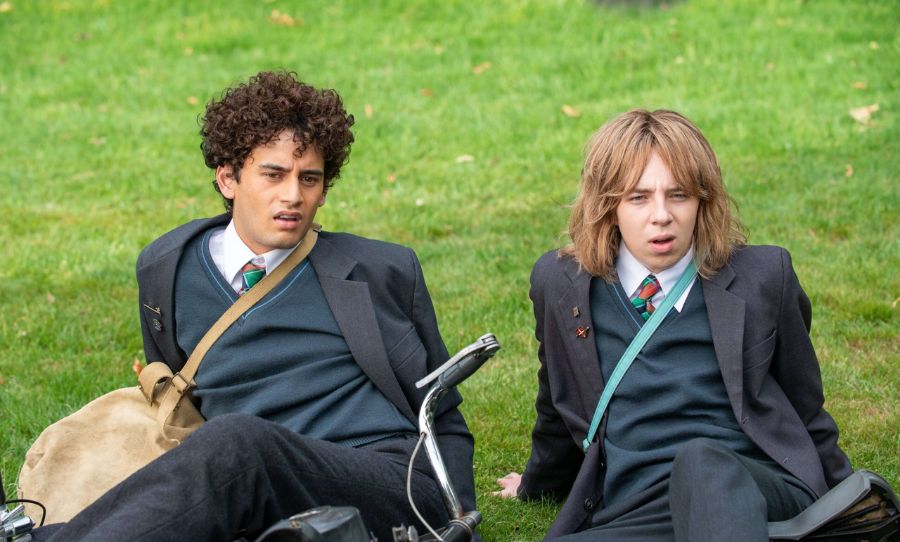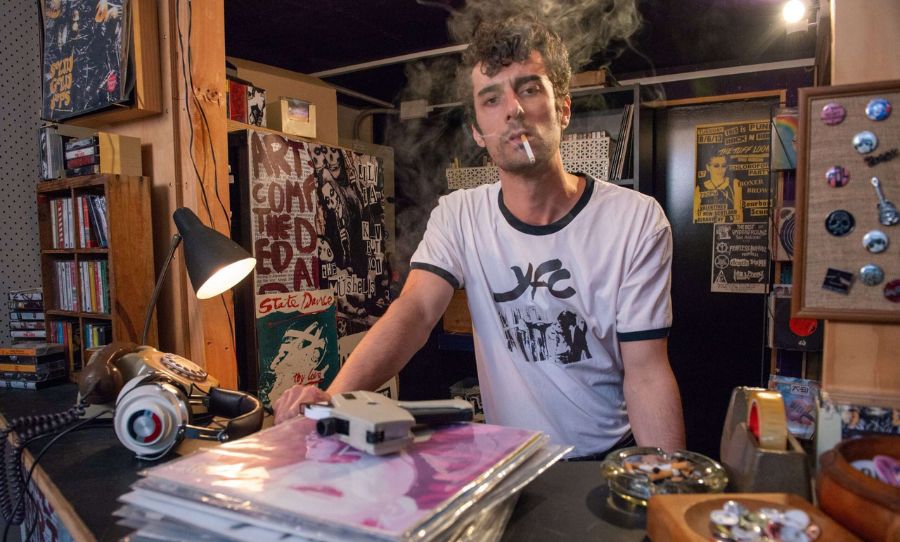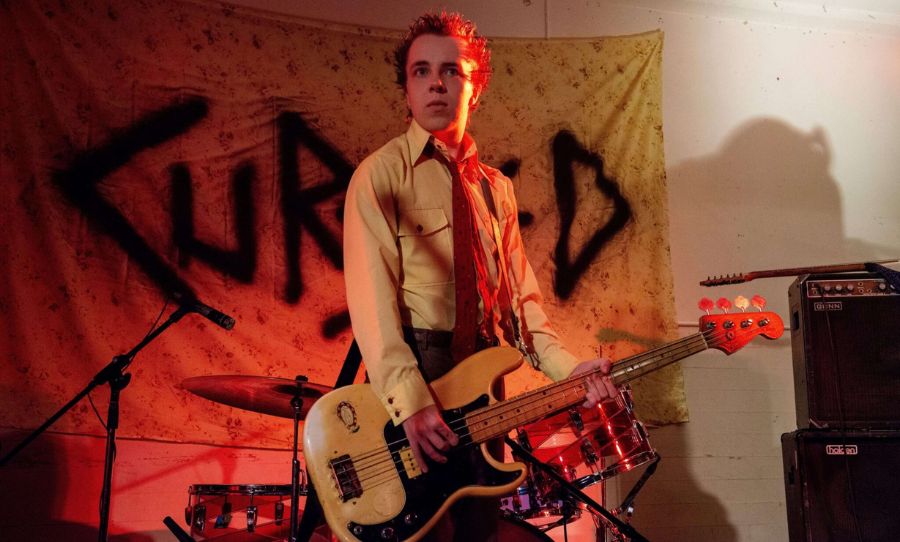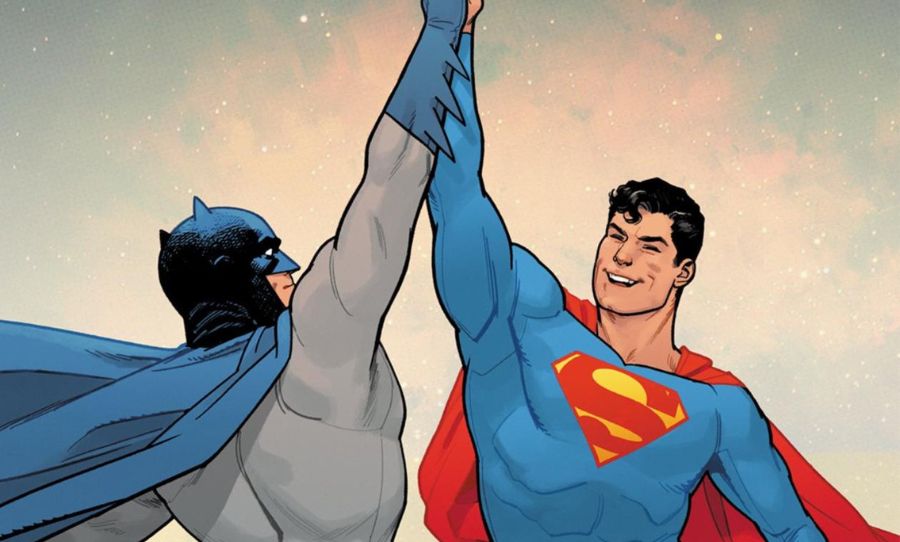We had a chance to have a quick chat with film director Johnathan Ogilvie about his upcoming punk movie Head South
Have you ever listened to punk and thought, I really want a movie all about punk?
Well, you’re in luck.

New Zealand director Johnathan Ogilvie is gearing up for the Australian release of his new film titled Head South.
The film centres around a NZ youth who, in a desperate attempt to charm the mysterious and enigmatic girl of his dreams, must pretend to be a complete punk-head.
The plan starts to fall down on him after family issues and social bearings force him to come to grips with who he really is.
The film is a celebration of everything punk, an ode to the punk revolution in Christchurch around the 70s.
A revolution that inspired the inception of the legendary Flying Nun Label in 1981.
We were lucky enough to catch Johnathan for a quick chat, to get caught up on everything Head South stands for.
Check it out below.
HAPPY: Head South will soon be releasing around Aus, what is the feeling like ahead of its release?
JOHNATHAN: Really excited to be presenting Head South on the big screen thanks to the commitment and support of independent cinemas around Australia. We are at an unfortunate period in cinema when Hollywood product is cynically masquerading itself as innovative. It is squeezing out the truly innovative, independent, films that genuinely speak to people who aren’t North American. (I should point out that the only reference to America in Head South is when Malcolm tells Angus to “piss off to California” because he has surfie hair – before his spiky top haircut!).
HAPPY: After selling out film festival screenings and achieving a 100% rotten tomatoes, did you expect such a warm reception for the film?
JOHNATHAN: I hoped the film would speak to people. I assumed it would speak to the people of Ōtautahi Christchurch where it was filmed and to anyone who has ever yearned to be in a band and/or has excellent taste in music. But what amazed me is how it has crossed cultural borders and moved people who know nothing about post-punk or even New Zealand. We opened the prestigious Rotterdam film festival last year and received a tumultuous standing ovation. A year later the film is still playing in cinemas in Europe. In this time of artificial intelligence and algorithms Head South celebrates the joy of DIY creativity. And not just for younger viewers. A 50-something UK journalist told me that after seeing the film he immediately called his wife and said, “I want to start a band”.

HAPPY: The film explores the post-punk scene of Christchurch in the late 70s, are there any particular musical influences (band or artist) that stood out in the creative process?
JOHNATHAN: Yes, my band, YFC! We were a three piece with two bass guitars, drums and vocals – no guitar. This is actually my only concession to anachronism because the film is set in 1979 and YFC were not formed until 1981. All the other music in the film is absolutely true to the period and represents the new exciting music that relatively few people were listening to. At the end of the 1970s, the majority of the populace were still being force-fed excruciating and indulgent soft rock radio fodder from the West Coast of the US. If that sounds familiar to what is currently happening in cinema – you’re correct!
HAPPY: The Films main character Angus is put through something of an emotional route through the story, is his journey a reflection on some more modern themes/issues?
JOHNATHAN: The trials that Angus ( Ed Oxenbould) goes through are perennial teenage dilemmas. He wants to be cool and he wants to be loved. Consequently he can’t help but be attracted to the magnetism of characters like Holly (Roxie Mohebbi) and even his nemesis Malcolm (Demos Murphy). We can’t control the people we are drawn to in life. It takes a family tragedy for Angus to come around to recognising the true, as opposed to the magnetic.
HAPPY: Your creative direction is paired alongside cinematographer John Chrisstoffels, who has also worked with the legendary Flying Nun Label on a few projects. Was the connection to the label beneficial to the making of the film?
JOHNATHAN: Head South‘s connections with the Flying Nun records are multiple: The film acts as a quasi-origin story for the record label. It portrays the underground music scene of Christchurch that inspired Roger Shepherd to found a record label which gained an ongoing worldwide following of dedicated indie rock fans. The first record released on Flying Nun was by Roy Montgomery’s band, The Pin Group. Roy appears in Head South as Suave Man. (He is the suave stranger that whisks Angus’ mum away from the hair salon in a beautiful, red Alpha Spider). The opening onscreen text of the film, “This is Fact, this is not a Lie” is a lyric from Caroline’s Dream, a song by Flying Nun band, Children’s Hour. Our composer was Shayne Carter, frontman for famed Flying Nun bands Straitjacket Fits. Their song, She Speeds is one of the many Flying Nun tracks I made music videos for back in the day. The vinyl soundtrack of Head South by Shayne Carter, featuring Benee (Stella Bennett) is available on Leatherjacket Records through Flying Nun.
After I invited Roger Shepherd to the sound mix of Head South he remarked that, “The characters are spot-on and it oozes the weirdness of the Christchurch I remember”.
HAPPY: New Zealand has been a cultural hub for film over the years, are there any easter eggs for eagle-eyed fans that pay homage to some of NZ’s greats?
JOHNATHAN: So many easter eggs. The period detail by production designer Christopher Bruce is so precise that it has left many viewers amazed as to how authentic the world feels and how it evokes so many memories for them. The easter eggs are not just in the posters for foundational bands such as The Enemy, Toy Love, The Vauxhalls and The Scavengers but in the paintings, pottery and bric-a-brac of the family home.
HAPPY: The film is described as a ‘Coming-of-age’ story, in what words would you describe the film?
JOHNATHAN: Head South is an almost-true story. Everything in it happened, and mainly to me. It’s an authentic account of the post-punk music scene in Õtautahi Christchurch New Zealand, 1979, told from the point of view of a teenager who was there. It’s pretty funny, and it’s terribly sad; it’s a pre-internet story of life at the end of the world, when distance from the centres of the world’s cultures was a daily problem to be negotiated.
For me, the strength of Head South lies in combining a distinctive and unexpected coming-of-age story and setting with a vital pre-digital, pre-internet music genre that audiences worldwide are rediscovering.
And any shopper who has broken into a cold sweat in approaching a too-cool-for-school sales clerk will get Angus and Head South.
HAPPY: Given the film centres around the post-punk scene in 1979, how important was the sound design to the films overall aesthetic?
JOHNATHAN: Christchurch based sound designer Chris Sinclair did a brilliant job, aided by the inhouse mixers at Peter Jackson’s Park Road Post in Wellington. Giving a live feel to the music performances in a run down warehouse and a community hall was a challenge that necessitated a roughing up of the original recordings. Pre-digital valve amplification, just on the edge of distortion, and humming with aural excitement. That’s the essence of raw, loud electric guitar, bass and drum music – post-punk!
HAPPY: What makes you happy?
JOHNATHAN: Going to see a film in a cinema that says something to me about my life. And sharing this moving cinematic experience with complete strangers who have had a similar reaction. Viva the collective experience of cinema.



